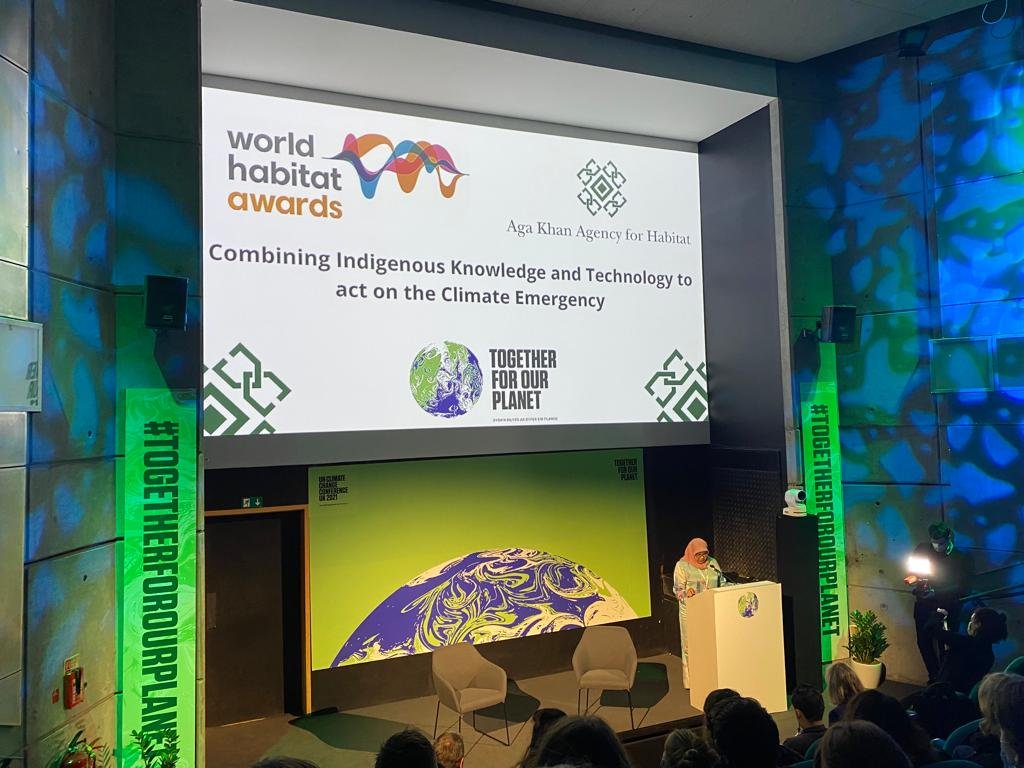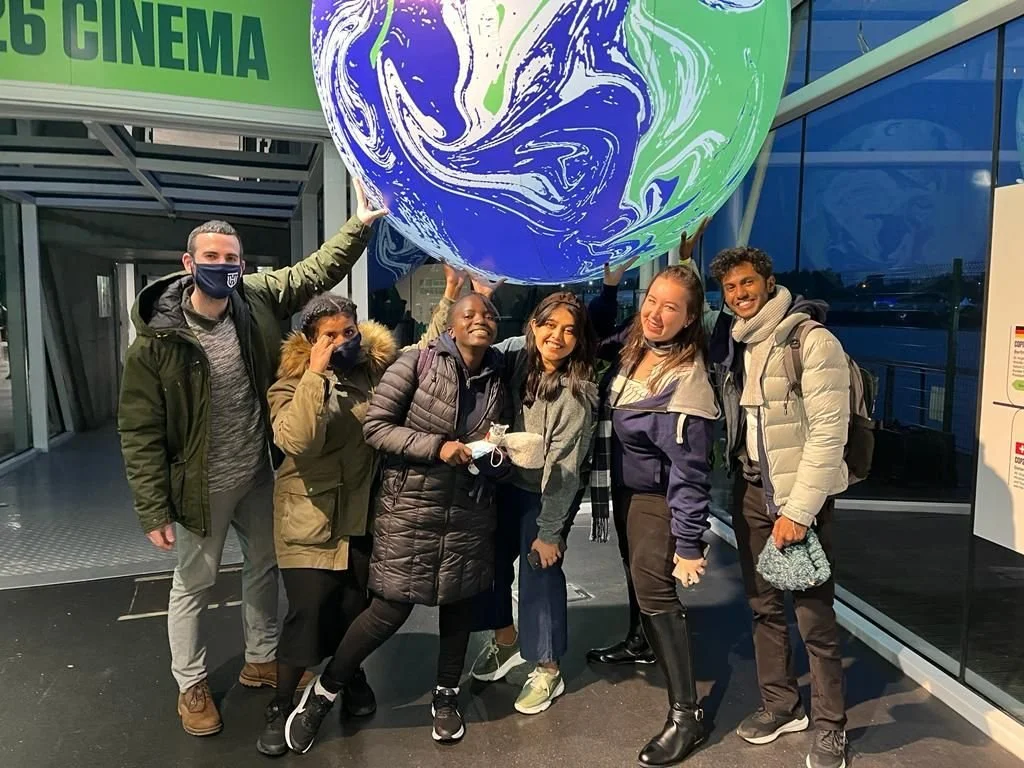COP26: Promise and Peril of Climate Declarations
As a WHT scholar (2021-2022), I was privileged to take part in the official delegation of the Weidenfeld Hoffmann Trust to the COP26 Summit in Glasgow, Scotland, including current and alumni scholars from almost ten different countries including South Africa, India, Chile, Sudan, Kenya, Columbia, Russia, and Israel. As a non-environmentalist expert, I can say that there is something truly unique about this summit. After all, this is the biggest global encounter on climate change, gathering politicians, diplomats, scientists, climate tech experts, activists, and curious graduate students worldwide. All sitting in one place, (or more accurately two colourful zones), for a limited period of time discussing the most urging issues our planet is going through, including topics like social innovation and climate justice, and the need to combine indigenous knowledge and technologies in climate emergency.
Nevertheless, despite its importance, no one can deny the criticism this summit has received over the years. Walking out the doors of the summit, we were able to observe mass protests against COP26, delegitimising its existence and questioning the budgets invested in such an event, which perhaps could be channelled to a different and better cause. This ambiguity surrounded me throughout the entire visit, trying to understand if what I see at the booths can have feasible potential on the day after. In this blog post, I hope to address this controversy relying on the interesting themes raised in the conference and share my lessons.
As an Israeli tech ethicist and practitioner, I was amazed to see the pioneering technologies showcased in the summit, even when being used to living in the start-up nation. During the summit, we got to attend inspiring and innovative sessions, highlighting the next generation of technologies that will foster climate justice and community adaptation. From the drones and satellites used by the Aga Khan Agency for Habitat Pakistan to support indigenous communities, to the research grants and open-source tools developed by Microsoft’s funding program AI for Earth, aimed at tackling environmental challenges.
The green zone was a festivity of innovation, hope and good intentions (and possibly a great testing point for all the COVID vaccines), with a special guest appearance of a pilot robot developed by Lincoln University, aiming at cutting strawberries independently in the fields. Notably, one of the recurring themes in the sessions was the need to invest in climate adaptation and not just in mitigation, since people need to “thrive and not just survive”, as articulated by the CEO of AKAH. Seeing this technological abundance at COP26 is a crucial sign, as there is greater scrutiny, awareness, and acknowledgement of Tech for Good to foster climate justice. However, much more can and should be done to protect our planet and vulnerable communities in all parts of the globe. Especially, when these technologies are still governed and developed by a particular geographic segment of the world, which to some extent alienate climate technologies from true representation.
In addition to the technological aspects, major themes highlighted the contribution of grassroots communities and intercultural exchange. A fascinating session in the summit described how the fashion industry can serve as an essential agent for change through the empowerment of local clothing manufacturers and distributors. These communities spread creative expressions to the world and teach a crucial lesson about culture conservation in industrial times. A particular example was given with the community-led social venture, Sustainable Fashion Scotland (SFS), which facilitates a sustainable fashion revolution and inclusivity through collective impact and knowledge exchange. Nonetheless, the ambiguity remains, as the current fashion industry still preserves gender bias and posits an abundant number of women on the verge of exploitation.
Interestingly, COVID-19 has had major implications on the summit, as it looked more like a European gathering post-Brexit, of all those who were lucky to meet the COVID regulations and attend the event. Again, discussing the most urging environmental topics without true representation of marginal voices and communities, which are more likely to be left out in the days after the conference.
As the years went by, the magic of COP has relatively diminished. Listening to the utopian numbers and promises governments will probably not fulfil, turns obsolete. An event that has become a reminder to us all that the strongest countries are unable to provide solutions to solve climate change, and vulnerable communities will not get their justice. Various critical voices in the summit have raised the incapability of governments to enforce the climate vision, which require the decolonization of climate solutions. Is it enough to think about the summit as an awareness multiplier and educational tool for the younger generation? As a networking event for all those who are trying to fundraise their next climate venture?
However, I came out of this summit with a different hope. It is perhaps easier to be optimistic when you belong to the technological side of the world and study at the University of Oxford, which does not suffer the climate implications in an equal manner. However, my hope has a different and non-government source. It is not because of the formal governmental delegations that kept on declaring promises which are not enforceable. Not the civilian protests that are crucial but stating the obvious. But because of the people in the Green Zone, entrepreneurs, researchers, activists, and educators, who kept on standing on the booths and showed the power of cultural innovation and social entrepreneurship. Those who truly care and understand that even if we cannot commit to future radical shifts, we can make a better present for all of us, including the margins which are usually forgotten. It is not a shame to declare the planned failures of the future when we can enhance current livelihoods and establish adaptive measures for vulnerable communities using digital technologies.
Digitisation processes have tremendous potential in promoting social good and climate solutions through data-driven decision making. However, they cannot revolutionise the environment and fix injustice when digital representation does not exist. Climate technologies cannot serve their developers only, as they are aimed at promoting a global social cause, which requires a digital infrastructure, education, and access at the community level.
I wish we could all address COP26 as a climate hackathon, rather than a government summit. A hackathon in which brilliant environmental experts and young enthusiasts are required to gather and plan the next solution which will help people thrive in all conditions. All under the commitment that new ventures will have to be created after this gathering. This summit needs to bring practice into the vision it is trying to declare. In 2021, imaginary deadlines of ending coal usage are simply not enough.



